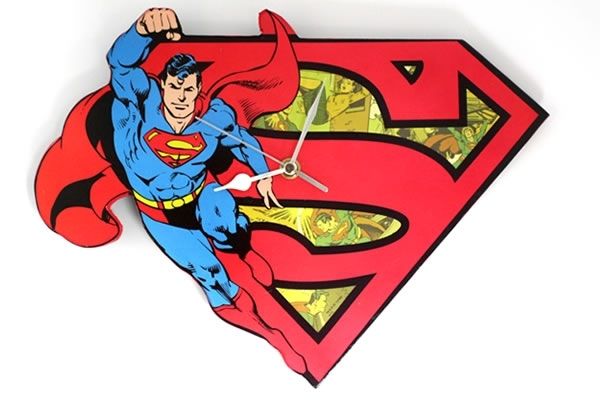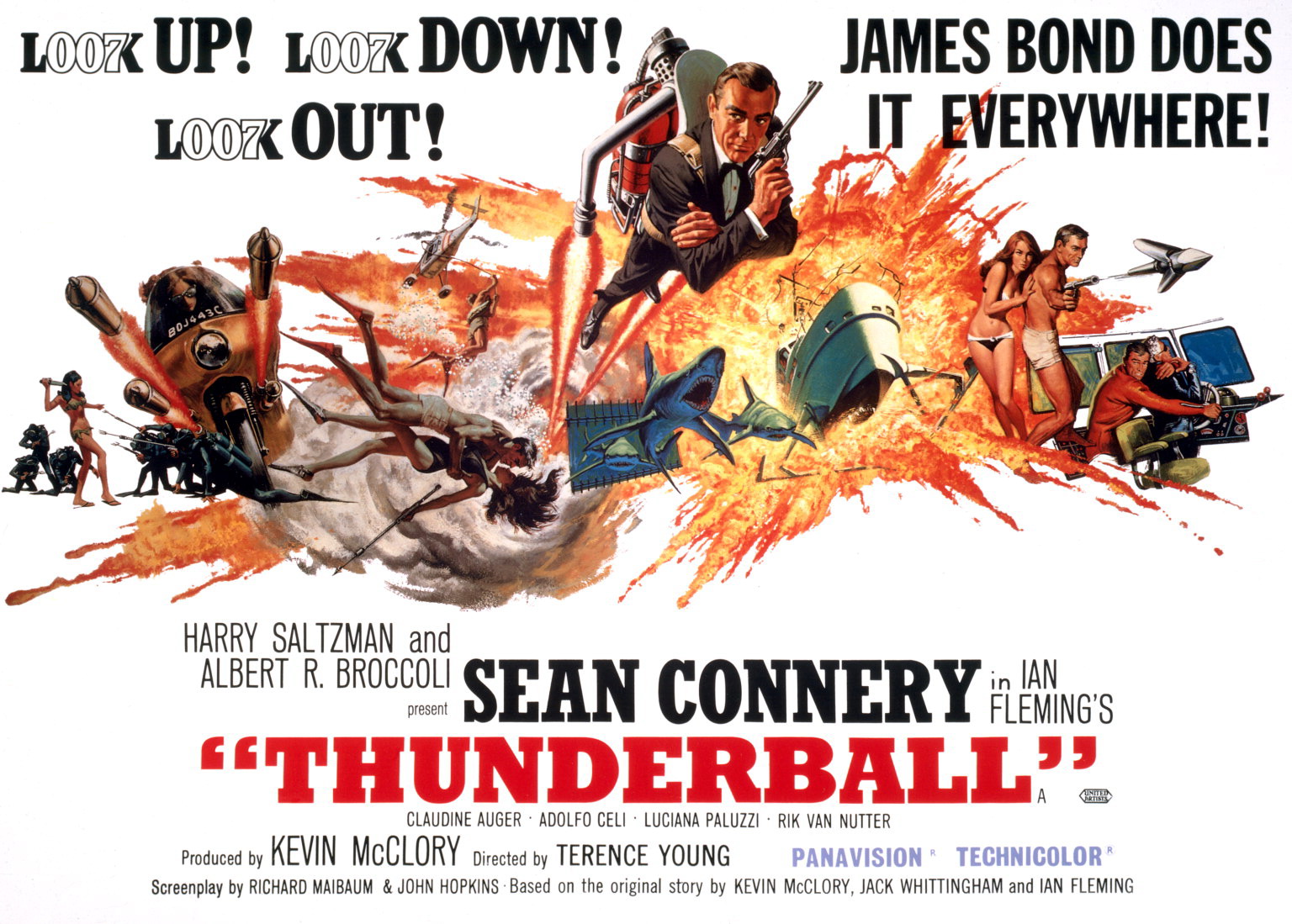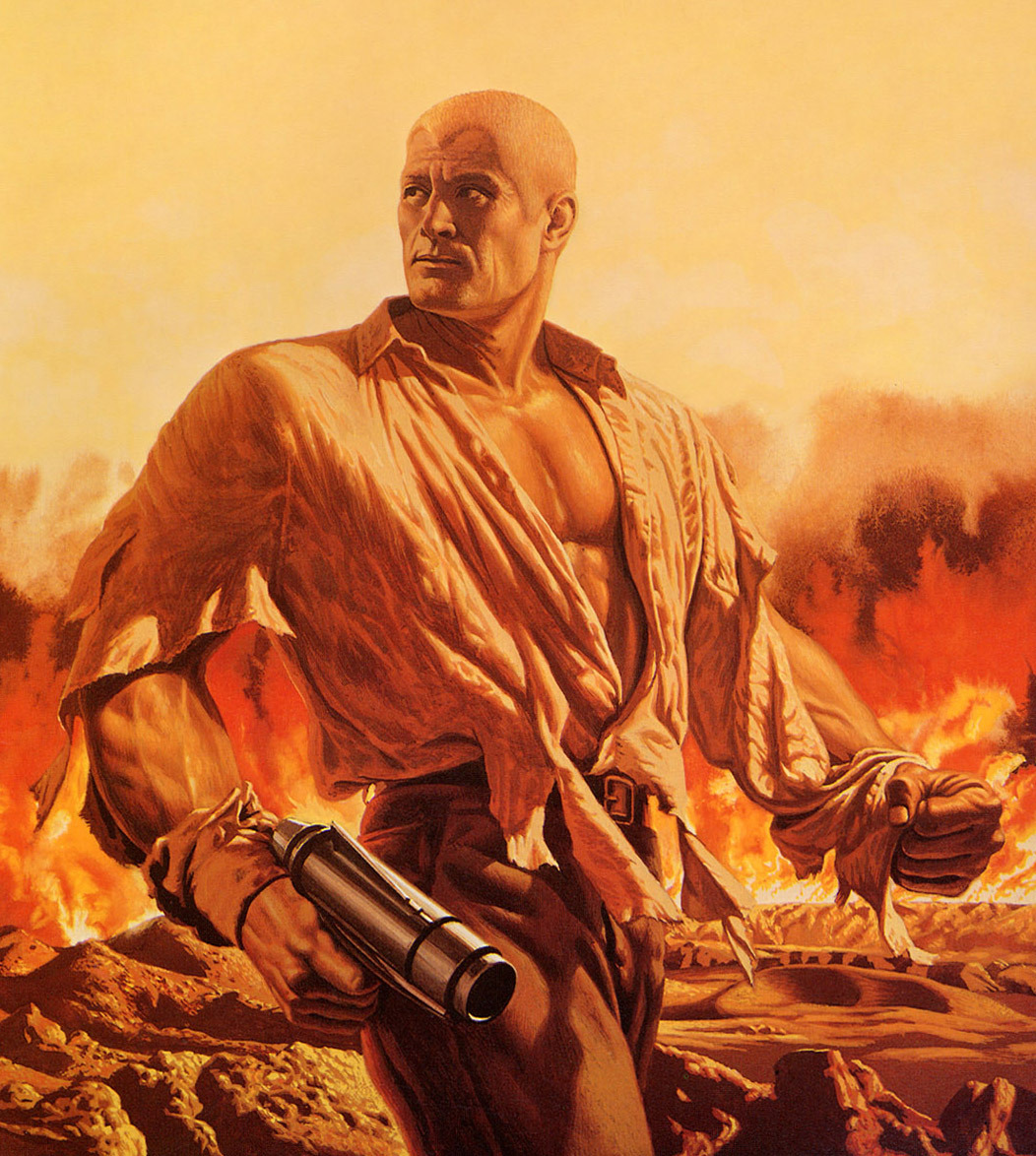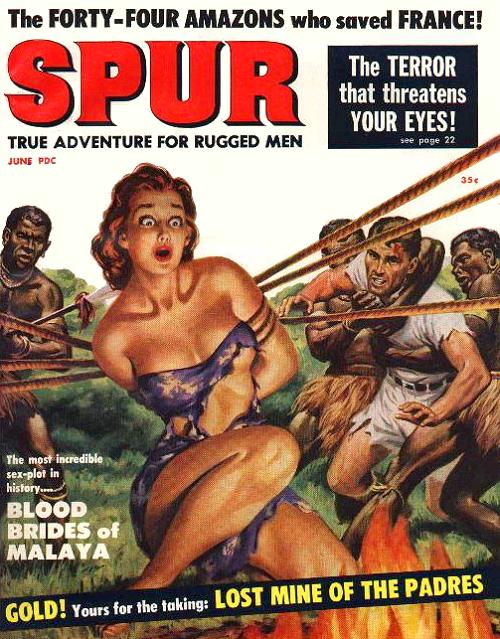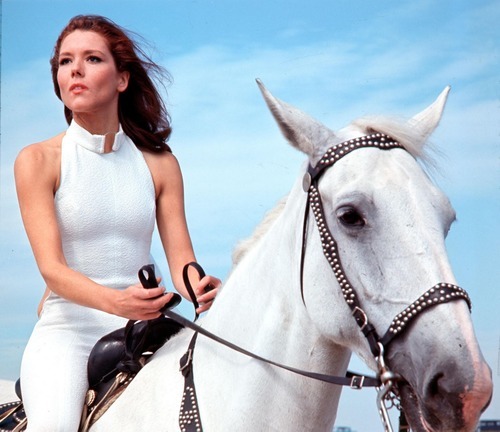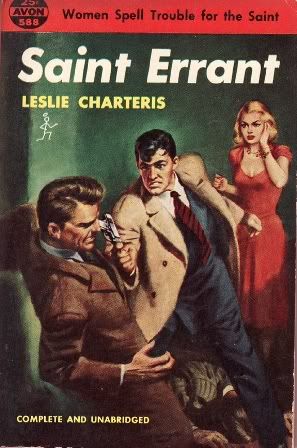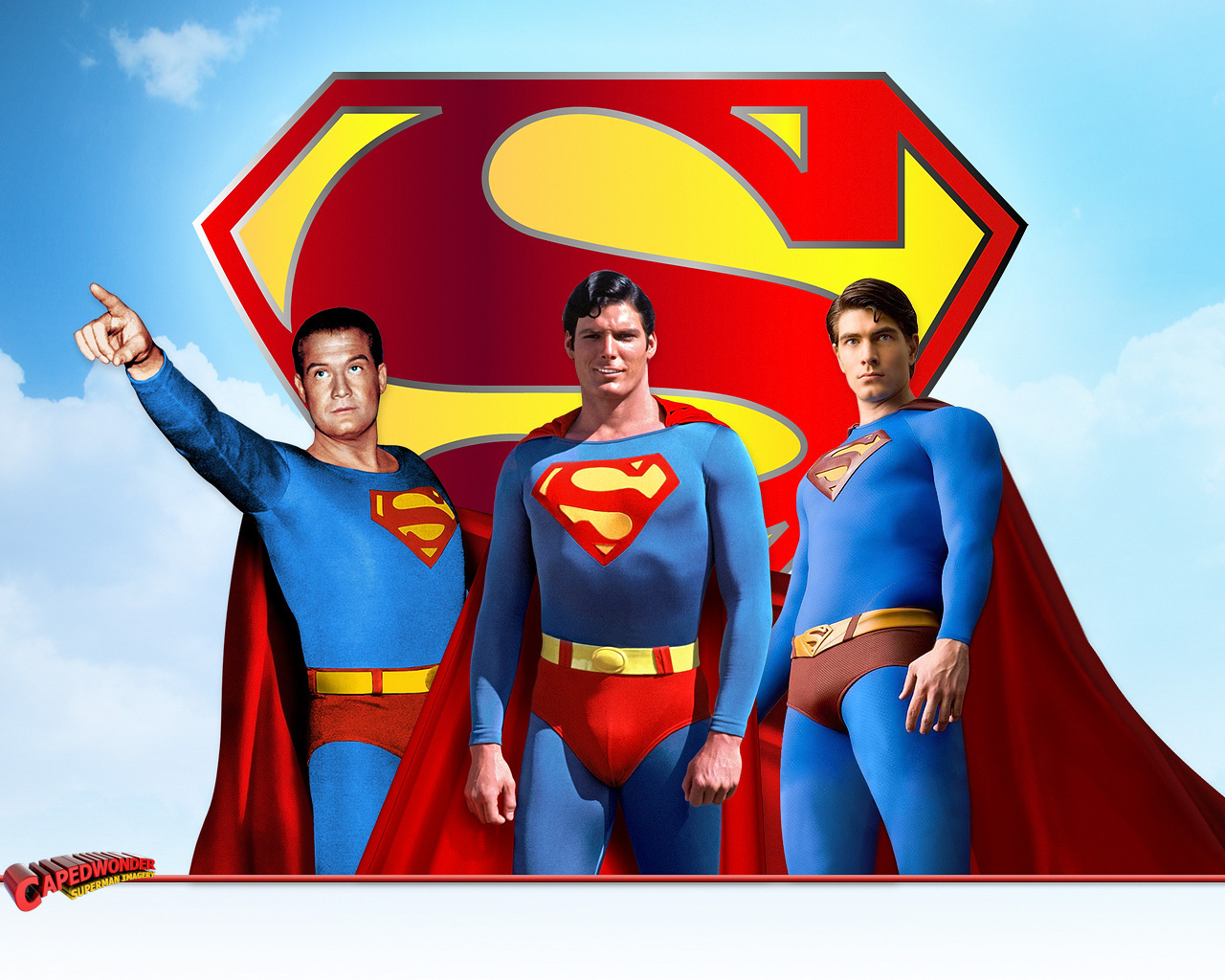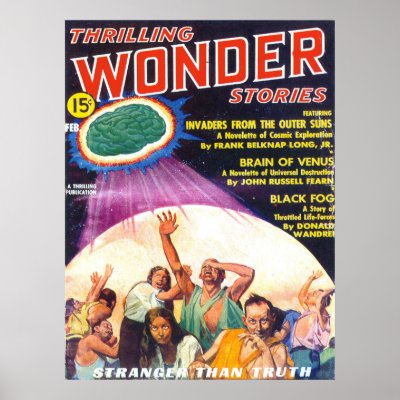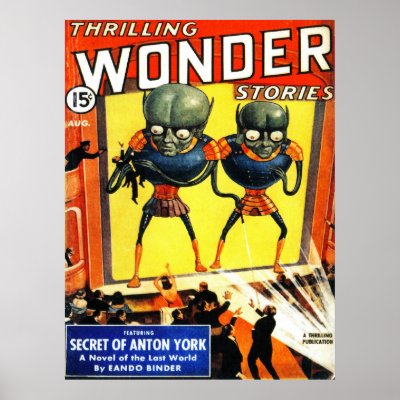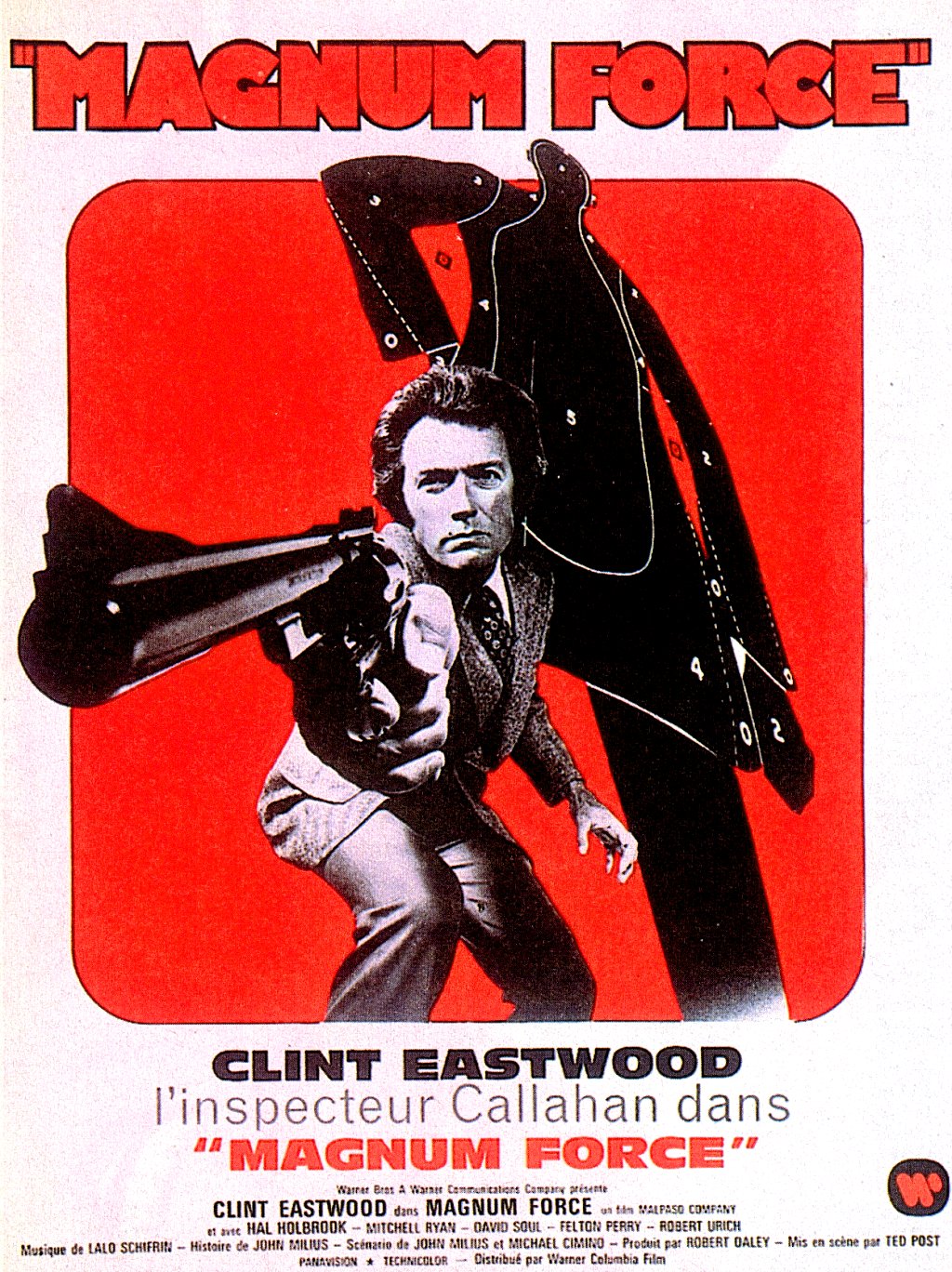 |
Raise your hand (or better yet, honk your car horn) if you know what these items are.
I've wanted a vintage drive-in movie speaker for my collection for years. I found one yesterday at a store in downtown Brenham. Appropriately enough, the store is called The Man Cave. They were having a 20% off sale yesterday and I scored one of these beauties (similar to one on the right above) for $40.00.
The speaker now sits proudly atop my film reel shipping can, such as the one pictured below. It's the former property of Paramount Pictures, circa the '50s and I bought it in an antiques store in Savannah, Georgia on our honeymoon in 2005. The shipping can and the speaker now reside on the hearth of the fireplace in our den.
|
Sunday, March 31, 2013
ANOTHER TREASURE!
FLEA MARKET FIND OF THE DAY!
 |
Judy and I had a wonderful time yesterday on our day trip to Brenham. We saw some spectacular bluebonnets, ate a wonderful lunch (meat loaf!) at the Brenham Grill and shopped until we dropped. We hit antique stores, a used book store and one tent sale on the highway in Burton. That's where I scored the treasure pictured above.
The box game I found appears to have all of the game pieces and the box is in terrific condition. For a hardcore MAN FROM U.N.C.L.E fan like me, this was a must-have item. I have a MAN FROM U.N.C.L.E board game (made by Ideal) that I bought on eBay a few years ago but it's in a much lesser condition than this card game.
Best thing about this blast from the past? The price. The game didn't have a price tag on it and when I asked the dealer how much, he looked at it and said "five bucks." Sold. I didn't argue. I just handed the man a five-dollar bill and walked away happy.
Stay tuned for more treasures from our shopping adventure.
|
Thursday, March 28, 2013
VINTAGE MOVIE POSTER OF THE DAY
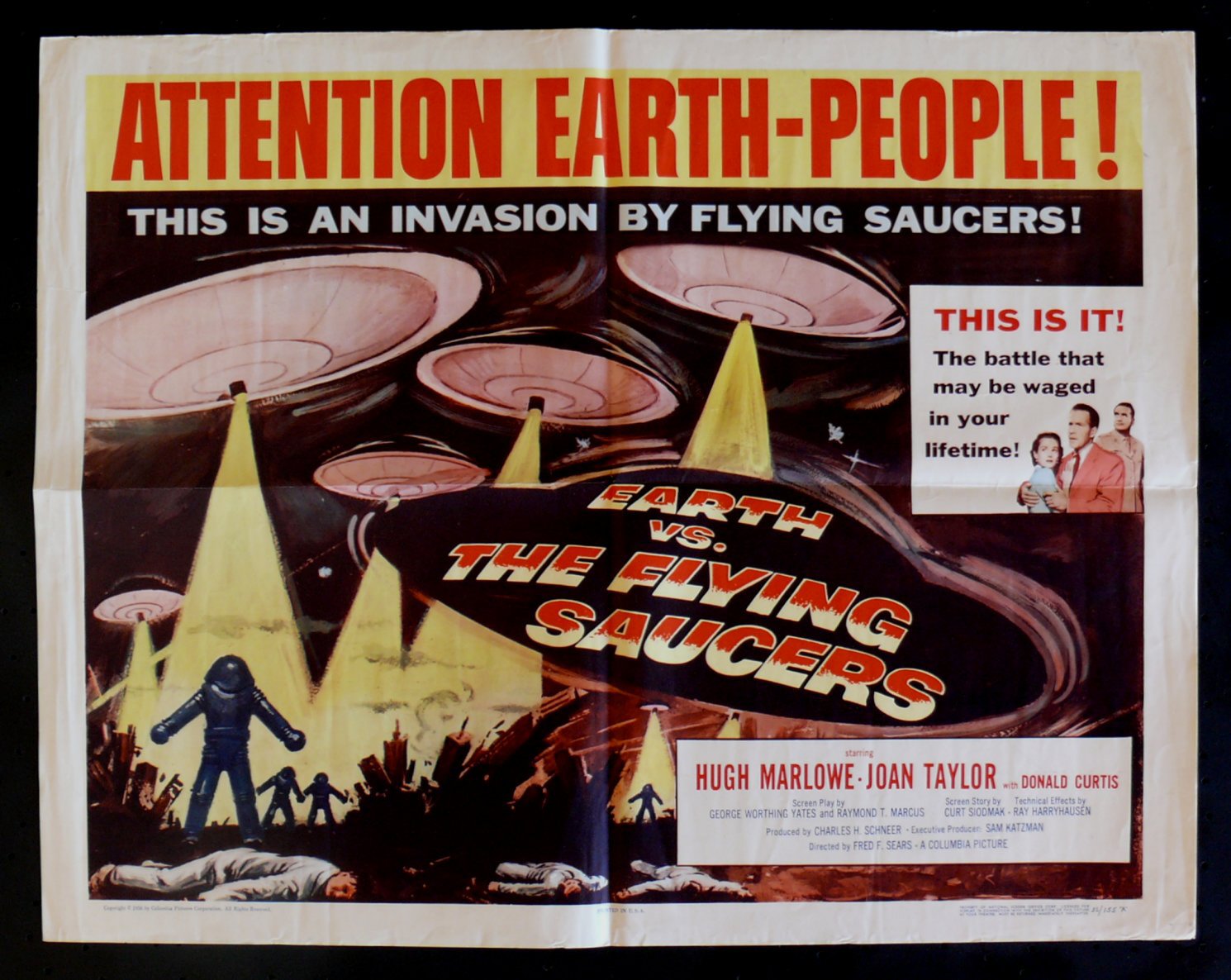 |
Special effects by Ray Harryhausen. I have this movie in my DVD collection. It's a classic! |
SILVER AGE COMIC BOOK OF THE DAY
 |
Okay, so it's not technically a Silver Age comic book but this magnificent book by Arlen Schumer belongs in the collection of every Silver Age comic book lover. I have a signed copy in my library. Highest recommendation. |
Monday, March 25, 2013
DOC SAVAGE IMAGE OF THE DAY
 |
James Bama's cover art for THE MENTAL WIZARD, #53 in the Bantam paperback reprint series. I've got this one! |
SILVER AGE COMIC BOOK COVER OF THE DAY
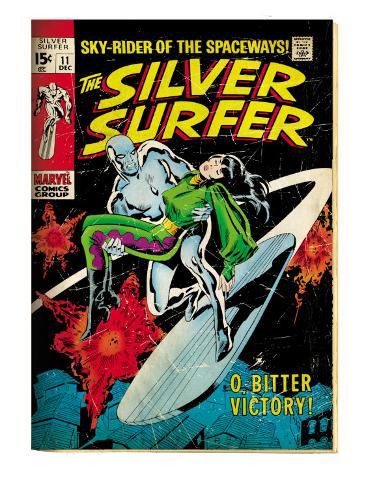 |
I have this issue of SILVER SURFER in my hardbound collection of all 18 issues of this title. The book I have contains the actual comic book issues themselves and was professionally bound. It's an interesting, one-of-a-kind collectible that I'm proud to own. |
Friday, March 22, 2013
WILL PENNY
 |
"That man's got more guts than you could hang on a fence."
Here's some important information from the Western movies 101 textbook:
Western movie rule #15: a good western film, especially one made in the 1960s, is automatically made better by having both Slim Pickens and Ben Johnson in the cast. Extra points are scored if the cast includes such memorable character actors as Anthony Zerbe, Clifton James and William Schallert.
Western movie rule #27: if you've got Bruce Dern and an over-the-top Donald Pleasence playing bad guys at the beginning of the film, they're doomed to die at the hands of the hero in the final reel.
Western movie rule #7: if you can't have your hero ride into the sunset at the end of the film, at least let him ride into a picturesque western landscape (a snow covered high country forest will do nicely).
All of these elements are in play in WILL PENNY (1968), which I watched this afternoon. Charlton Heston stars as the titular character, a middle-aged, uneducated cowhand who struggles to eke out an existence in the old west. It's a hard scrabble life but Penny is pretty good at it. Following a big cattle round up at the beginning of the film, Heston and fellow cowboys Lee Majors and Anthony Zerbe strike out on their own to find work to tide them over during the coming winter months. They run afoul of rawhiders Donald Pleasence and Bruce Dern. Zerbe is wounded and Heston kills one of the gang causing Pleasance to swear vengeance.
Once Zerbe is in the care of a doctor (William Schallert), Heston and Majors part ways. Heston eventually finds work at the cattle ranch run by Ben Johnson. He is assigned to guard the perimeter of the spread and heads off to a hut in the mountains where he'll spend the winter. Once there, he encounters a young woman (Joan Hackett) and her son who are living in the building after having been abandoned by their trail guide while on the way to California. Heston orders them to be gone by the time he gets back from his inspection of the range. While out in the high country, Heston is waylaid by Dern and Pleasence and left for dead. He makes it back to the cabin where Hackett nurses him back to life.
The three are forced to stay the winter in the remote outpost and over the course of time a strong bond develops between the three. Heston is shown the possibility of a family and a settled existence and begins to believe he really can have what he yearns for. But the bad guys show up again in the final reel and imperil Heston and Hackett. Majors and Zerbe arrive to help save the day and Heston is left with a heartbreaking choice: settle down with the woman and boy, both of whom he loves or stay an itinerant cowhand, moving from place to place with no family or dependents.
Written and directed by Tom Gries, WILL PENNY is a very good film. Heston gives a sympathetic performance as a conflicted man who wants something he knows he cannot have. The supporting cast is uniformly superb, Hackett is easy on the eyes and the on-location cinematography by Lucien Ballard is first rate. Recommended.
|
Thursday, March 21, 2013
NEVADA SMITH
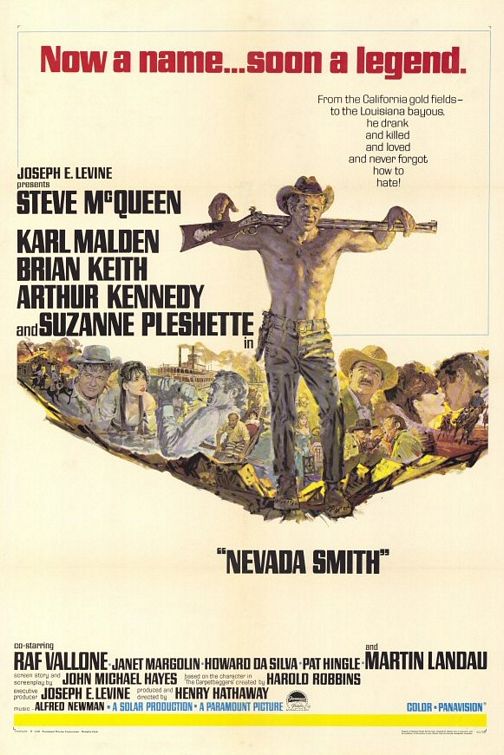 |
I've had the DVD of NEVADA SMITH (1966) on my shelf for years. I don't recall how I got it. I may have bought it used or, more than likely, picked it up in a trade. Regardless of how it came into my possession, it sat on my shelf unwatched for several years.
I don't know why I resisted watching this film. After all, Steve McQueen is one of my favorite actors and it is a western, one of my favorite film genres. I think my aversion to the film was the somewhat tenuous connection to the Harold Robbins' novel THE CARPETBAGGERS. I've never read the book or seen the film that was made from it by I gather that the character of Nevada Smith plays some role in the story. Since I hold Mr. Robbins' entire body of work in less than high regard, I figured (incorrectly), that NEVADA SMITH was some kind of trashy, soap opera styled western.
Boy, was I wrong.
I finally watched the film the other night and I thoroughly enjoyed it. It's a standard revenge tale set in the Old West. McQueen is a young half-breed whose gold mining parents are slaughtered at the beginning of the film by an unholy trio of bad guys played by Martin Landau, Arthur Kennedy and Karl Malden. McQueen is left to burn his parents' corpses and swear revenge on the three men, no matter how long it takes.
He sets out to find the men and soon encounters Brian Keith, a gun dealer who schools McQueen in the art of handling a gun. McQueen tracks down Landau in Abilene and the two square off in a knife fight in a cattle pen. Guess who wins?
Next, McQueen learns that Arthur Kennedy is in prison in Louisiana. McQueen stages an armed robbery in New Orleans just to get arrested and assigned to the work gang in the swamps where Kennedy is doing hard time. Here he meets a beautiful young Cajun woman (Suzanne Pleshette) who helps him and Kennedy escape through the swamps. Unfortunately, neither Kennedy or Pleshette survive the escape.
Finally, McQueen tracks down Karl Malden and his new gang in the gold fields of California. McQueen joins up with the gang and becomes part of an elaborate gold heist. He finally shoots Malden who begs him to finish him off but McQueen, now sick of killing, tells him "you're not worth killing" and walks away. The End.
Throughout the film, I kept wondering why it was entitled NEVADA SMITH. There's no one in the film that goes by that name. It's only near the end of the movie that McQueen uses the name as an alias when he falls in with Malden's gang.
Capably directed by Henry Hathaway, NEVADA SMITH sports great on-location cinematography and a stellar supporting cast. The lovely Joanna Moore (Nurse Peggy on THE ANDY GRIFFITH SHOW) has a small part as Landau's widow and character actor icon Strother Martin appears in one very brief scene. In the scene, he's referred to as "Strother" which makes me suspect a couple of things. One, there's missing footage with more of the "Strother" character, perhaps as part of the group of cowhands that McQueen is briefly a member of. Or, Strother Martin just happened to be on the set that day and agreed to do the cameo as a lark.
While I was watching NEVADA SMITH, I kept wondering how I could have missed this terrific film for so many years. I also wondered what other overlooked treasures are sitting on the shelves of my DVD collection. NEVADA SMITH is a first rate film. If you're a fan of either western films or Steve McQueen, check it out. If you're a fan of both, you're in for a treat.
|
Thursday, March 14, 2013
SILVER AGE COMIC BOOK COVER OF THE DAY
 |
When I was a kid, I had a limited amount of money to spend on comic books. I usually bought whatever titles caught my eye and that I had enough money to buy. But I always made sure to buy TALES OF SUSPENSE. I thought it was a terrific value for my twelve cents. Not one but two of my favorite superheroes in one comic book. At the time, Gene Colan was drawing the Iron Man feature while Jack Kirby was the regular penciller on Captain America. Silver Age Marvel Comics don't get much better than this.
|
Tuesday, March 12, 2013
MAROONED
 |
"Iron Man One, this is Houston, do you copy, over."
For years I've been incorrectly recalling some information about MAROONED (1969). I seemed to recall that the film came out at the same time as the Apollo 13 mission, which would have been in the spring of 1970. I had it in my mind that due to the similarities of both the film and the real-life space mission, Columbia Pictures (which released the film) pulled back on their advertising campaign, fearful of being perceived as exploiting a possible tragedy in the making. I thought that this effected the box-office take of the film and that it did not do as well as expected. Turns out that once again, a memory that I could have sworn was true has been proven incorrect by Wikipedia (assuming of course, that the information there is correct!)
MAROONED was released on November 10, 1969 and the Apollo 13 mission took place in April, 1970, so there's no chance of any interference between life and art. I do know that I did see the film on first release at the Americana Theatre in Austin and that I had a paperback copy (and still do) of the Martin Caidin novel on which the film was based. I also remember (geek that I was and still am), cutting the advertisement for the film out of the newspaper and carrying it around in my school notebook. Hey, I was in eighth grade, give me a break. In short, young Frank was keenly excited about this film which promised to be an exciting, realistic, outer-space adventure.
MAROONED (which I watched again last night for the first time in years) is the story of Iron Man One, an Apollo-like space craft with a three-man crew (Richard Crenna, Gene Hackman and James Franciscus). The men are assigned to spend seven months aboard an orbiting space station but when one of the crew (Hackman), begins to show signs of fatigue and starts making mistakes, the mission is cut short after five months and the men are ordered to return to earth.
Something goes wrong with the space craft on their return and the three men are trapped in orbit with a rapidly dwindling oxygen supply to sustain them. On the ground at mission control, a bold rescue mission is proposed by flight director Ted Dougherty (David Janssen). At first, the proposal is denied by NASA chief Charles Keith (Gregory Peck) but he is ultimately persuaded to take the gamble which involves launching an experimental space craft (designed to hold two people and modified to carry four) into orbit in less than forty-two hours. Oh, and by the way, there's a monster hurricane headed for the cape.
As luck would have it, the launch takes place while the eye of the storm passes over the launch pad. Once in orbit, it's a race against time to save the two remaining astronauts (one of them has since died). The men are rapidly loosing consciousness as their air supply runs out but additional help is on the way in the form of a Russian space capsule and a brave cosmonaut who lends a hand. The men are rescued and the movie is over.
MAROONED has a terrific cast of solid actors both on the ground and in space. The wives of the astronauts (who are given token screen time) are capably played by Lee Grant, Nancy Kovack and Mariette Hartley. The special effects (while nowhere near as good as those showcased in 2001: A SPACE ODYSSEY) were good enough to win the Academy Award for Visual Effects. MAROONED is not a bad film. It's earnest and straight-forward but it's slowly and deliberately paced and, while this is a grossly unfair comparison, is not nearly as suspenseful as the real-life APOLLO 13 film directed by Ron Howard.
Still I loved MAROONED when I was a kid and I enjoyed watching it as an adult. But boy, I could have sworn the circumstances surrounding its' release were different. Recommended.
|
Monday, March 11, 2013
ICE STATION ZEBRA
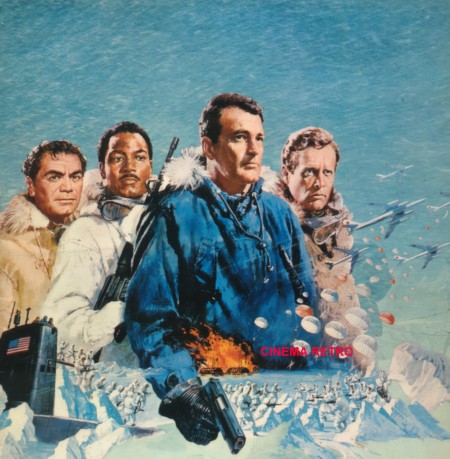 |
Well, there it is, right there in black and white. The release date for ICE STATION ZEBRA (according to Wikipedia) was October 23, 1968. I would have bet good money that it was a summer release but it appears that my memory on this one is incorrect. However, I do recall the following facts correctly: I saw the film on the night it opened in Austin (a Friday) at the Capitol Plaza Cinema and I got my haircut at Bailey's Barbershop (now Sportsman's) on Jefferson Street earlier that afternoon. I don't recall the name of the barber but I do remember being juiced with anticipation and excitement over the prospect of seeing the film that evening. Don't ask me how or why I can remember those details but for some reason, I do.
I didn't have to get a haircut before watching ICE STATION ZEBRA again last night. It was the first time I'd seen the film in its' entirety in many, many years. I loved it as a twelve-year seventh grader and I wanted to see if the film still works for me as a fifty-seven year old adult. It does to some extent but I wasn't blown away by it. I think what I like most about this film is the idea of it: a grand submarine/cold war thriller/arctic adventure movie played out on the big screen with four solid actors in the lead roles. A screenplay based on a novel by the master of adventure, Alistair MacLean. A great score by Michel Legrand. And a terrific poster. What's not to like?
ICE STATION ZEBRA was one of the last films produced by MGM in the 70mm Cinerama format. It was also released as an "event" film. The version I watched on DVD last night has an overture, an intermission and exit music, the kind of presentation reserved for the best of the best films, like Stanley Kubrick's 2001: A SPACE ODYSSEY (also released in 1968). I don't recall the film being presented in this way when I first saw it but that was a long time ago and the special presentation may have been reserved for theaters in larger cities. The whistles and bells add much to the grandeur and scope of ICE STATION ZEBRA but they can't disguise the fact that the film is really not much more than a tricked up B-movie.
The plot concerns a Russian spy satellite that has come back to earth near Ice Station Zebra, an American weather station situated above the Arctic Circle. Both the Americans and the Russians want to get their hands on the film contained in the satellite as it shows the precise location of American missile bases across the globe. The crew of Ice Station Zebra is cut off by a severe storm and communications have ceased. The only option is to send in the nuclear sub Tigerfish (commanded by Rock Hudson). The sub will make the journey under the ice, rescue any survivors and retrieve the satellite.
Along for the voyage is a mysterious intelligence agent (Patrick McGoohan) who refuses to reveal exactly what his mission is, a Russian agent working for the Americans (Ernest Borgnine) and a tight-lipped captain (Jim Brown) in command of a contingent of U.S. Marines. One of these three is not what he appears to be and the mission is placed in jeopardy by his actions.
There are some very impressive shots of the sub under the ice but once the men arrive at their destination, the polar ice cap is clearly a studio bound set with fake ice boulders and a painted backdrop (it looks like a STAR TREK episode on steroids). After some additional skulduggery (which leaves one man dead), they are just about to zero in on the location of the satellite when Russian paratroopers arrive demanding the capsule be turned over to them. A tense stand-off follows and ultimately Hudson wins the day by surrendering the capsule and then destroying it by remote control.
Here's one extraordinarily odd bit of trivia about ICE STATION ZEBRA. It was reportedly billionaire recluse Howard Hughes's favorite film. While he was living away from the world at the Las Vegas Hilton hotel he used to call one of the local television stations and demand that they broadcast the film for his enjoyment. Eventually (so the story goes), Hughes acquired a print of the film and he is said to have watched it 150 times before his death.
I don't know what it was about ICE STATION ZEBRA that floated Howard Hughes's boat. But I do know what twelve-year-old Frank liked about it. It's a fond memory of my childhood which remains a good film after all of these years. Recommended.
|
Saturday, March 9, 2013
FAIL SAFE
 |
I didn't see FAIL SAFE (1964) when it was first released. After all, I was only eight years old at the time and this tense thriller was definitely not produced by Walt Disney. I finally saw it for the first time a few years ago when we ran it one summer at the Paramount. If I recall correctly, it was on a double bill with either DR. STRANGELOVE (a film with which it shares many similarities) or THE MANCHURIAN CANDIDATE. Either way, it was a night of cinematic paranoia, 1960s style.
I watched FAIL SAFE again last night and was struck by just how bold a film it was. The story line is simple. A U.S. bomber penetrates Soviet Russia airspace by accident and heads towards Moscow to deliver it's payload of nuclear bombs. Nothing can stop the plane from reaching it's target. The President of the U.S. (Henry Fonda), is forced to make a horrific decision. Once Moscow is attacked and destroyed, he will order another U.S. bomber to attack New York City. With two major world cities destroyed, the balance of power will remain intact and a world wide nuclear war will be prevented.
As the U.S. President, Fonda spends all of his screen time in a bunker deep beneath the White House. His only companion is his translator, Buck (Larry Hagman). Fonda stays in contact with the Soviet premier via the "hotline" as the two men discuss the fates of their respective countries and the horrible decisions that must be made. Fonda and Hagman are both outstanding in these scenes.
The rest of the action in FAIL SAFE plays out in three other locations: the Pentagon, the SAC command room in Omaha, Nebraska and the flight deck of the bomber en route to Moscow. At the Pentagon, Professor Groeteschele (Walter Matthau) holds court as a political scientist who is an expert on nuclear war and deterrence. He's the Dr. Strangelove analog in the film and once the malfunction has occurred that sets the plot in motion, he advocates that the bomber be allowed to complete its' mission, confident that with Moscow destroyed, the Soviet Union will stand down and disarm, signalling the end of Communism.
Matthau is opposed by General Black (Dan O'Herlihy,) a U.S. Air Force general who wants nothing to do with thermo-nuclear war. He's our point of entry to the film as we see him haunted by a strange and vivid dream at the very beginning of the film. As fate would have it, he's ordered by the president to pilot the plane that drops the bombs on Manhattan at the end of the film.
In Nebraska, two officers, General Bogan (Frank Overton) and Colonel Cascio (Fritz Weaver, who is win, place and show in the U.S. Secretary of State John Kerry look-alike contest), watch the drama play out on the "big board". Cascio eventually cracks under the strain and tries to take command of the operations. Cooler heads prevail.
On the bomber, Ed Binns is Colonel Grady, the pilot who is determined to follow his orders no matter how wrong they are.
FAIL SAFE is a claustrophobic film. There are only a handful of scenes shot in the outdoors, with the majority of the action taking place in these four tightly confined spaces. The black-and-white cinematography is harsh and there's no musical score whatsoever. The story unfolds in a matter-of-fact manner and visually resembles a European art film more than an American made Hollywood movie of the early 1960s.
The Soviets are never seen on camera (except for a photograph). Only their voices are heard. The bombers are clearly stock footage and the destruction of Moscow and Manhattan are never actually shown. We hear the sound of Moscow being incinerated over the phone lines while the end of Manhattan is comprised of a series of abrupt jump cuts showing everyday life in the city while a countdown is overheard.
FAIL SAFE is a sober look at what could happen when military technology goes wrong. It's as timely now as it was forty-nine years ago. A great cast, a terrific script and masterful direction by Sidney Lumet combine to make this one a cold war classic. Highly recommended.
|
Thursday, March 7, 2013
Wednesday, March 6, 2013
JACK KIRBY ART OF THE DAY
 |
Double-page spread from the first issue of KAMANDI, THE LAST BOY ON EARTH, one of the King's great science fiction adventure stories. |
SILVER AGE COMIC BOOK COVER OF THE DAY
 |
The third and final chapter in the legendary "Galactus Trilogy", the greatest three-part saga of the Silver Age of Comics. |
Tuesday, March 5, 2013
SILVER AGE COMIC BOOK COVER OF THE DAY
 |
Pencil art by John Buscema (left) and published art for AVENGERS #54. I don't know that I've mentioned it here before but after the first 100 issues of FANTASTIC FOUR by Stan Lee and Jack Kirby, the run of AVENGERS issues produced by Roy Thomas and John Buscema, are my all time favorite silver age super-hero comics. They just don't get any better than this! (Image from the Albert Bryan Bigley Archives)
|
Subscribe to:
Comments (Atom)
